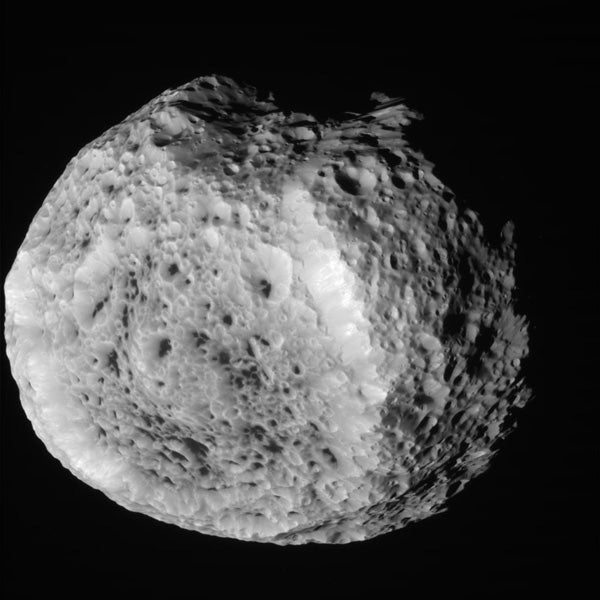NASA’s Cassini Saturn orbiter was the first to see Hyperion in sufficient detail to make out its strange craters. And over the past decade, Cassini also has helped make the origins of this alien object much less mysterious.
The moon’s minuscule gravitational pull on Cassini shows Hyperion is made mostly of empty space. And like the rest of Saturn’s moons, ice is its primary building block with little rock, so its density is quite low. That helps explain the satellite’s craters. Most impact craters we’re familiar with form after an object smacks into a body’s surface and sends out an explosive shock wave that blasts material in a circular pattern. But on Hyperion, astronomers suspect impactors actually compress the weak surface, and the ejected material is blown off the moon entirely. And because the satellite is so porous, the craters remain pristine.
That faint gravity also helps explain Hyperion’s chaotic rotation, which resembles the bizarre movement New Horizons saw with some of Pluto’s moons.
But could it be a comet? At this point, that seems unlikely. The moon is several times larger than any comet seen before. However, astronomers do see it as cometlike. The dust-covered moon has a similar makeup as comets and has been repeatedly bombarded by debris over the years. It also never had to cope with the Sun’s harsh rays in the inner solar system. Astronomers suspect Hyperion formed in an icy impact, which left the moon as a thin rubble pile without the needed density to completely compact.
Associate Editor










